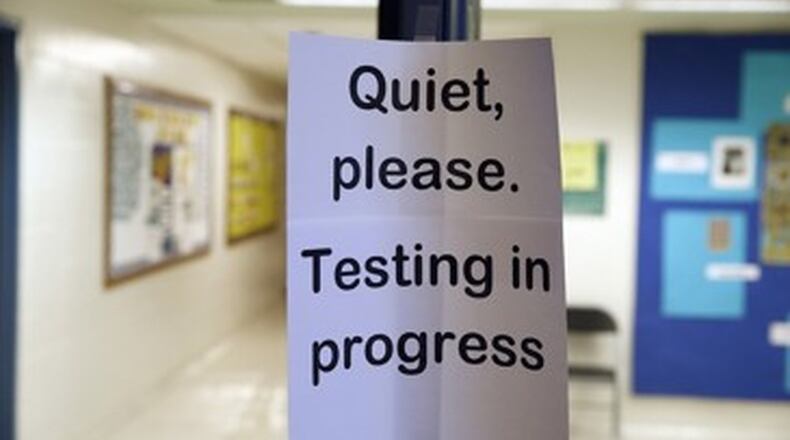School districts hastened to point out where their scores had gone up Friday when Georgia released results of its annual school rating system, but those scores also underlined some big questions about how learning is measured: How useful are these numbers, and do they really measure the right stuff?
"I believe that we need to engage in a thoughtful process," said Gov. Brian Kemp, "to create an accountability system that paints a true picture of what's happening in a school."
He was commenting on the 2019 College and Career Ready Performance Index, a gauge the state developed based on test scores and other information.
Atlanta Public Schools and the school districts in Fulton, DeKalb, Gwinnett, Cobb and Clayton counties all pointed to gains, in their overall score or on either the elementary, middle school or high school level or, in Clayton, for 28 individual schools.
But, noted Clayton Superintendent Morcease Beasley in a statement, "The new accountability process, implemented in 2018, appears to have some 'unintended consequences' that create a confusing picture for our stakeholders as we attempt to share an overview of academic performance."
Last year an updated calculation was used for the state’s scorecard, so the new numbers released Friday are comparable only to 2018 scores, not any earlier years.
Statewide, the new score showed a drop for elementary and middle school performance and an increase for high school.
That seemed to raise the governor’s eyebrow. He believes in holding schools accountable, his statement said, “but in a year when we’ve seen nearly across-the-board increases in national test scores and graduation rates as well as Georgia Milestone scores, seeing the CCRPI show a decrease instead raises concerns about the measurement used to determine school and district achievement.”
Beasley also cited a contradiction in the numbers: “Our data results show increases in student achievement and content mastery; however, the CCRPI calculation indicates a decrease in performance in each level making it difficult tor us to share a complete, accurate and data-supported picture” of the schools’ work.
“This places our district in a challenging situation that our leaders and teachers do not deserve given the hard work they are doing every day with our students.”
Beasley said he had expressed his concerns to state School Superintendent Richard Woods.
Woods also frets about the problem and suggested some kind of modification. "As we aim to lessen the number of high-stakes tests our students take, we need the weight of testing in CCRPI to reflect the same priorities," he wrote in an op-ed article.
Calling for “a fair measurement of performance that lifts up, rather than labels, our public schools,” Woods said, “the time is right to make that shift.”
Even in districts that could boast about this year’s CCRPI, such as Cobb County, where a district statement noted “students outperformed their Georgia peers at every level – elementary, middle and high – on all components,” reservations were noted.
Cobb School Superintendent Chris Ragsdale’s statement on the new data noted “there are significant opportunities to better reflect what students know.”
CCRPI
The state’s College and Career Ready Performance Index is a tool for comparing schools, that compares these components:
Content mastery — how well students have met the state's standards for English, math, science and social studies, based on test scores
Progress — How much further students have gone since last year in their learning
Closing gaps — How much progress schools make in narrowning academic gaps among subgroups such as minority students, the disabled or those whose first language is not English
Readiness — What a school offers to prepare its students, outside core academic subjects, such as Advanced Placement classes or dual-enrollment classes in which students can receive college credit
Graduation rate — Counted only for high schools
You can check your district or school's score here: http://ccrpi.gadoe.org/Reports/Views/Shared/_Layout.html
About the Author
Keep Reading
The Latest
Featured
